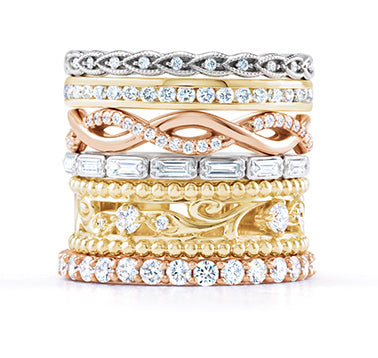Lifetime Warranty
24/7 Customer Service
Free Shipping
30-Day Return
Moijey Fine Jewelry & Diamonds Blog
Why Tourmaline Is Another Rainbow of the Earth
When we think of October's birthstones, most people are quick to mention opal. However, this colorful month has a second gemstone that is just as mesmerizing: Tourmaline. Known for its stunning variety of colors, tourmaline is often referred to as the "rainbow gem" of the Earth. Whether you're an October baby or simply a gemstone enthusiast, tourmaline offers an endless array of hues and fascinating stories to discover.

According to an ancient Egyptian legend, tourmaline acquired its kaleidoscopic colors as it passed through a rainbow while journeying from the earth's core. Whether or not a rainbow exists in Jules Verne's Journey to the Center of the Earth is up for debate, but one thing's for sure: tourmaline's dazzling hues make it a gem worth celebrating—especially for those born in October. In fact, October babies can enjoy two birthstones: opal and tourmaline. Just as sapphire is not confined to blue, tourmaline comes in a variety of vivid shades.
Tourmaline’s Historical and Cultural Significance
Historically, tourmaline was often confused with other gems. For example, green tourmaline was once thought to be emerald. Its name is derived from the Sinhalese word "toromalli," meaning "mixed gems," a fitting title given the gemstone’s multicolored varieties. Dutch traders in Ceylon (now Sri Lanka) are credited with coining the term after encountering these colorful, water-worn pebbles. Today, green tourmaline remains a popular alternative to emerald, as seen in the Green Tourmaline & Diamond Earrings and Pendant suite, offering a beautiful yet distinct option for jewelry lovers.

A Diverse and Colorful Gem
Tourmaline crystals share a triangular structure, but their chemical composition can vary, resulting in a wide range of colors and properties. One of the most notable varieties is rubellite, or red tourmaline. Rubellite gets its deep red tones from the presence of manganese. However, when exposed to different light sources, the stone may appear more pink than red, and in such cases, it's referred to as pink tourmaline. A standout example of this gemstone’s beauty is a Rose Gold Tourmaline Ring, which showcases rubellite’s vivid hues.

Similarly, green tourmaline, also known as verdelite, can sometimes be confused with emerald. However, verdelite's color is due to the presence of chrome and vanadium, which gives it a rich green hue. When these elements dominate, the gemstone is referred to as chrome tourmaline.

Then there's the spectacular particolored tourmaline, which displays more than one color due to chemical fluctuations during its formation. The most famous variety is watermelon tourmaline, which features a stunning blend of pink and green—often cut to reveal a red core surrounded by a green outer layer, reminiscent of a slice of watermelon.

Black Tourmaline: Schorl’s Protective Properties
Schorl, the black variety of tourmaline, takes its name from the village of Zschorlau in Saxony, Germany, where it was first discovered. This dark tourmaline gets its color from iron, producing shades of deep brown or bluish-black. While it makes up about 95% of all tourmaline found worldwide, schorl isn’t typically considered gem-quality. However, it was popular in Victorian mourning jewelry, symbolizing protection and strength during times of grief.

Despite its dark and moody appearance, schorl has a reputation for shielding its wearer from harmful radiation, toxins, and even negative energy. Whether or not one believes in its mystical properties, the allure of owning black tourmaline, especially when paired with gold or accent diamonds, is undeniable. A custom schorl piece—whether a pendant, earrings, or a complete set—could offer a stunning, one-of-a-kind addition to any jewelry collection.
The Endless Allure of Tourmaline
Tourmaline’s versatility makes it a gemstone like no other. Its vast array of colors and distinct chemical properties mean that no two pieces are alike. Whether you're drawn to the deep reds of rubellite, the bright greens of chrome tourmaline, or the mystical allure of black tourmaline, this gemstone offers something for everyone.

Stay tuned as we dive deeper into the world of tourmaline in future posts. With so many varieties and fascinating stories surrounding this gem, there’s always something new to discover!






